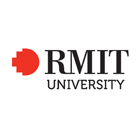Advanced Diploma of Building Design (Architectural)
Advanced Diploma of Building Design (Architectural)
Make your mark in technical positions in building design offices and architectural spaces. Draw, design and build Explore techniques from freehand drawing to digital design as you learn about the presentation, documentation and architectural workflow processes for building projects. Focus on the practical and technical application of design skills, and…
Categories
COURSE DESCRIPTION
Make your mark in technical positions in building design offices and architectural spaces.
Draw, design and build
Explore techniques from freehand drawing to digital design as you learn about the presentation, documentation and architectural workflow processes for building projects.
Focus on the practical and technical application of design skills, and create innovative, sustainable designs for domestic and commercial-scale building projects.
Learn about building design from the ground up as you explore topics covering
innovative and sustainable design
innovative digital applications
problem-solving
structural and construction technology
project documentation
architectural project administration
construction processes
environmental sustainability and design
materials technology
building services
communicating and working with stakeholders
associated planning and building regulation codes and standards.
You’ll build the right skills to communicate and work effectively with a variety of stakeholders, including regulatory authorities and a wide range of consultants associated with the design, construction and building services.
Throughout your studies and beyond, you’ll have opportunities to contribute to the ongoing development of the building industry and the built environment.
Day-to-day, you can expect to be involved in working to client briefs, preparing architectural drawings and building specifications and visiting building sites for analysis and investigation. You’ll also analyse bushfire attack levels, environmental factors, liaise with engineers, quantity surveyors, building surveyors and planning professionals and working to local council codes, by-laws and national regulations.
Career
As a graduate of the Advanced Diploma of Building Design (Architectural), you have the skills and qualifications to work in a wide range of technical positions in architectural practices and building design offices, including roles such as:
building designer
building information modelling (BIM) and computer-aided design (CAD) specialist
documentation specialist for domestic and commercial projects.
As a graduate, your work focus could include:
digital presentation and architectural documentation of buildings
architectural modelling and animation
specialist and technical design areas such as commercial/domestic design and planning
retail design and documentation
working as part of a technical architectural team to support a design team or as part of project management.
Graduate ready to make your mark in technical positions in building design offices and architectural spaces.
As a student at RMIT, you have access to a range of career resources specially designed to assist job-seeking students and graduates.
Further study
You are guaranteed entry into one of the following RMIT programs when you successfully complete the Advanced Diploma of Building Design (Architectural):
- Bachelor of Project Management (Honours) – you will receive 1 or 2 semesters of credit (depending on the semester you commence) equivalent to 96 credit points
- Bachelor of Property Development, Investment and Valuation (Honours) – you will receive 2 semesters of credit (equivalent to 96 credit points)
- Bachelor of Construction Management (Honours) – you will receive 3 semesters of credit (equivalent to 144 credit points)
- Bachelor of Interior Design (Honours) – you will receive 2 or 3 semesters of credit (depending on the intake you commence) equivalent to 144 credit points.
- Bachelor of Landscape Architectural Design – you will receive 60 credit points.
EDUCATIONAL INSTITUTION
Since its establishment in 1887, Royal Melbourne Institute of Technology University (RMIT) has been meeting the needs of the community surrounding it. Originally a Working Men’s College, RMIT showed its flexibility during World War Two, training over 20,000 servicemen in communications to help with the war effort.Now, it is a true pioneer in international education, championing cross-border study opportunities with campuses in various countries. Granted formal university status in 1992, RMIT is ranked 21st in the world for universities that are less than 50 years old.RMIT is the largest higher education institution in Australia, currently with more than 82,000 students. With nearly 20% of those students coming from overseas, it is a university that truly welcomes diversity and is a melting pot of different cultures. RMIT has three campuses in Vietnam, a European hub in Barcelona, an office in Indonesia, and partners with 200+ institutions in 42 countries to provide study opportunities worldwide.

